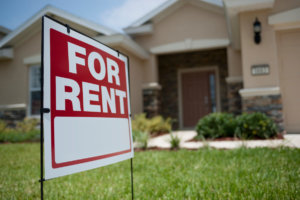Grow your Real Estate IRA with the BRRRR Strategy
 Have you heard about the real estate strategy referred to as BRRRR?
Have you heard about the real estate strategy referred to as BRRRR?
The acronym is for Buy, Rehab, Rent, Refinance, Repeat. Utilizing this method is a great way to accelerate the buildup of equity in a rental property portfolio.
The success of this approach hinges on being able to add value to properties through rehab, and then tap that equity gain as capital to acquire additional properties.
You can utilize the BRRRR strategy within a self-directed IRA and see powerful results. Within an IRA, however, there are a few details that are slightly different that one might encounter in an after-tax environment.
Let’s take a look at how you can use the BRRRR method to grow your self-directed IRA.
B — Buy
When pursuing this strategy, the old adage that “you make money when you buy” is absolutely true. The goal is to acquire and rehab a property, then be able to pull out as much equity as possible to finance the next acquisition.
Finding a property with the potential to effectively add value is key. Many investors use a 70% rule as a guide, meaning that acquisition cost plus rehab costs represent 70% or less of the after-rehab value of the property.
Knowing that most rehab projects go over budget, a conservative number like 70% is wise. That way, if you end up in a situation where acquisition and rehab costs represent 75-80% of ARV, you have still generated a reasonable amount of equity to roll forward with.
The process works best if an IRA can purchase a property and pay for rehab costs using all cash. It’s possible to joint venture with other investors or use hard money loans, but those options will increase the cost and complexity. Be sure in either case that the IRA avoids any interaction with disqualified persons, and that any debt instrument is non-recourse.
R — Rehab
The focus of the rehab stage of the process is to add value cost effectively. Avoid high end finishes and expensive upgrades — they often cost more than the value they add to the property.
A rental property needs to be clean, functional, safe, and reasonably appealing. Focus on the repairs and updates that achieve that goal.
Be sure to put a little curb appeal on the front of the house to make a great first impression for a loan appraisal.
Of course, when your IRA is the property owner, your role in the rehab process is very limited. You cannot work on the property or otherwise add value to the process.
Your role is to make the key decisions on what the property upgrade will include and hire the vendors to make that project plan happen. For intensive rehab projects, you should probably hire a project manager or lead contractor to manage the many day-to-day variables.
If permits are required, they should be obtained by the contractors the IRA hires to do the work, not by you.
R – Rent
Once the property has been updated and is ready to occupy, you want to get a tenant in place. The sooner you can get the property producing positive cash flow, the better.
As with any rental property, there are some tricks to marketing and screening that will help you find the best possible tenants. You want someone who will take good care of the property, as it may be some time before you can refinance, and you still want the property looking sharp when the appraisal happens.
R – Refinance
An effective refinance transaction is one of the primary drivers of success when applying the BRRRR strategy. The goal is to pull as much cash out of the property as possible to facilitate the acquisition of additional properties.
In the non-IRA world, you can obtain relative high loan-to-value financing in a reasonably short period of time after putting the property in service.
With an IRA, the requirement to use non-recourse financing changes the lending environment. Being aware of this change and tempering your expectations accordingly is important.
Some non-recourse lenders may require a longer seasoning period before using appraised value. They may want to see a property in-service for a year. Some lenders will use a newly appraised value without seasoning.
Non-recourse loans are more conservative by nature, and you can generally expect a maximum LTV of about 60-65%. Lenders will also want to see approximately 10-15% of the property value in cash reserves within your self-directed IRA.
As an individual investor, it’s possible with the right properties and good financing to pull 100% of your initially invested capital out of a property and move onto the next deal, perhaps within 3-6 months. In an IRA, expect to leave some capital tied up in the initial property.
Once a property has mortgage financing in place, it will be generating Unrelated Debt-Financed Income, which is subject to taxation. The tax impact is generally nominal, but you’ll want to work with your CPA to understand the process and prepare the necessary tax return for your IRA.
Investors with a Solo 401(k) plan benefit at this stage, as a Solo 401(k) is exempted from taxation on UDFI generated via real estate debt.
R – Repeat
If you’ve purchased and re-financed effectively, your IRA should now own a performing property with only a small amount of IRA capital locked up into the deal. The IRA can then move that capital forward and repeat the process with additional properties over time.
Contact us with your questions about using your IRA to buy, rehab, or rent properties »
Talk to An Expert Today!
Learn these little known strategies and tactics, and unlock your retirement plan today.
